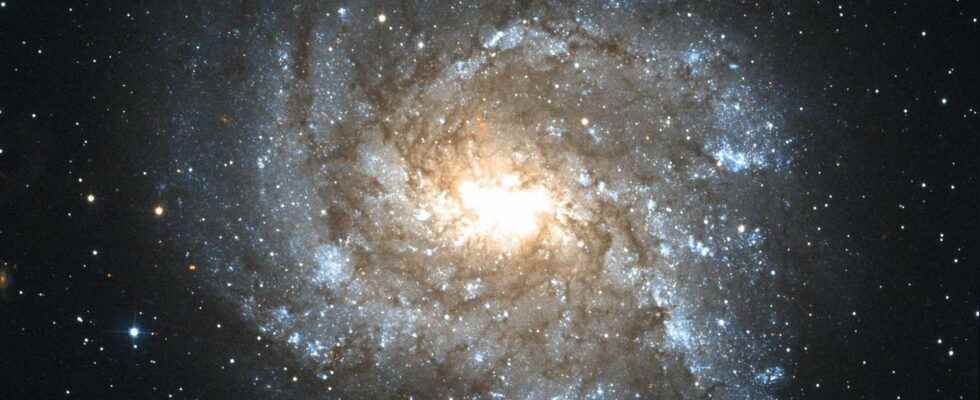During observations of a spiral galaxy known as NGC 2082, astronomers have discovered a mysterious, bright and compact radio source. Its origin remains, to this day, unknown.
You will also be interested
[EN VIDÉO] The first radio signal from an exoplanet Researchers at Cornell University (USA) have recorded what looks like a radio signal from an exoplanet about 50 light years from our Earth, Tau Bootis Ab. The signature, they tell us, of its magnetic field. The promise of now having a new tool for studying the planets located outside our solar system. @ Ryan MacDonald, Carl Sagan Institute, Cornell University
From the center of the galaxy NGC 2082, one spiral galaxy located about 60 millionlight years in the constellation sea bream, comes to us a strong radio signal of unknown origin. Revealed by astronomers during observation campaigns carried out in 2019 and 2021 by different telescopeshe responds to the sweet name of J054149.24-641813.7.
In a study published on arXivits discoverers have made several hypotheses about its origin, in particular by comparing it to other signals radio identified. It would recall in particular, by its spectral index and its brightness high, the fast radio burstsoften shortened by the acronym FRB for “Fast Radio Burst”. These flashes mysterious are able to release in a few thousandths of a second, as much energy as the Sun in a day, but their origin remains unidentified to this day.
A quasar or a radio galaxy
Unfortunately, J054149.24-641813.7 does not reach a level of luminosity sufficient to be assimilated to a quick burst, according to the researchers. Few candidates then remain in the race: among them are quasars, pulsar and some nebulae or radio galaxies. But almost every hypothesis has so far been ruled out. Too bright to match a remanent of supernova but ” not bright enough to be a source persistent radio with a built-in FRB progenitor”this mysterious source has a flat spectral index, that is to say a source which would be of thermal origin.
This spectral index also eliminates another possibility: the pulsara periodic signal from a neutron star which turns very quickly on itself. There are only two possibilities left: quasar and radio galaxy. Quasars correspond to active nuclei of very bright galaxies, which contain in their center a supermassive black holejust like the Milky Way houses in its center Sagittarius A*.
As to radio galaxiesas their name suggests, they are galaxies whose emitted energy comes from radio waves due to synchrotron radiation. But, whether the source matches one or the other, ” we can expect to see some absorption from Hi; however, there is currently no Hi High data resolution for NGC 2082 “, conclude the researchers. The mystery still persists.
Interested in what you just read?
